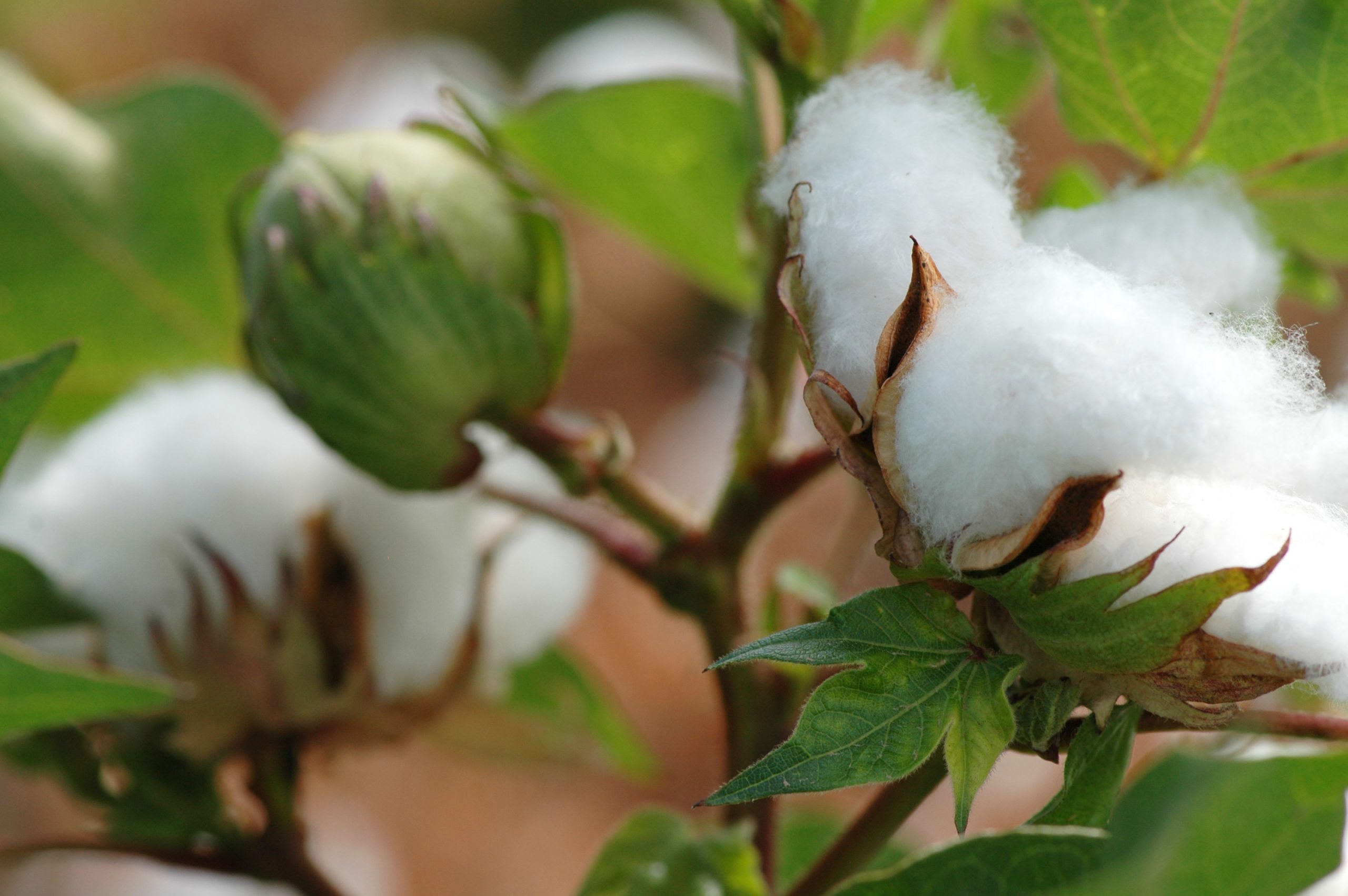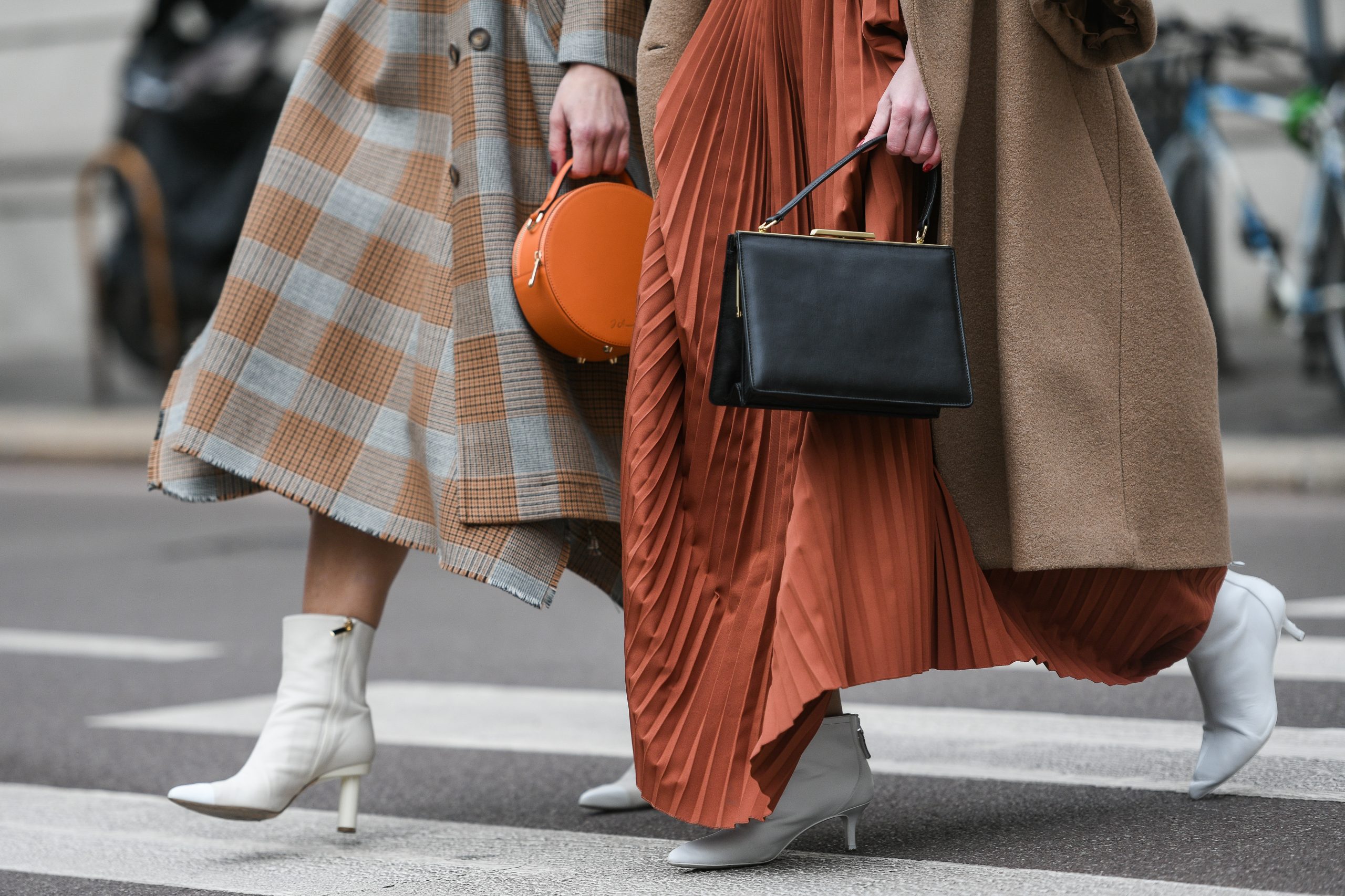Here’s our guide to the issues with different textiles.
There’s an awful lot of information about different textiles available, sometimes with contradicting views, and which often seems a bit biased depending on who has undertaken the research. But here is our take.
Within different textiles there are a lot of variances, such as different grades of cotton or wool, different processing methods and growing practices, and variances in how sustainably they are produced. Textile mills can vary on how they combine and produce the same compositions. Brands who care most about sustainability usually provide information about their sourcing practices on their websites.
The main problems with textiles are: water usage, hazardous chemicals used in dyeing and finishing that are dangerous to workers and pollute waterways, the microfibres that they release into the ocean that end up being consumed by fish, and the pesticides and treatments used to grow crops that are harmful to the farmers, workers, and wildlife in the area. Furthermore, clothes often have a short life cycle and many aren’t recycled, and some textiles never break down or when they do, they release methane and chemicals. As a global population, we are using the equivalent of 1.5 planets worth of natural resources (WWF). Every year we continue to extract new raw materials to create products that most likely end up in landfill where they can take centuries to decompose.
Cotton
While cotton is a natural fibre that can biodegrade at the end of its life, it is also one of the most environmentally demanding crops. Cotton is very water intensive, using between 10,000 and 20,000 gallons of water to make a single pair of jeans and up to 3,000 to make a t-shirt. It also uses high levels of pesticides and toxic chemicals that seep into water supplies and the land. According to Fashion for Good, conventional cotton production accounts for one sixth of all pesticides used globally impacting farmers and local communities through the use of harmful chemicals. In developing countries approximately 20,000 individuals die from cancer or suffer miscarriages as a result of chemicals sprayed on conventional cotton. We recommend choosing only cotton that is sustainably sourced. Cotton feels great to wear, is reasonably strong and hardwearing, the fabric breathes well when worn and it has the potential to be recycled into other textiles.
Linen
Being derived from flax plants, linen requires a quarter of the water cotton needs to be produced, virtually needs no pesticides, every part of the flax plant is usable and it is biodegradable. If you keep the natural colour it doesn’t need to be dyed which makes it more sustainable. It is also absorbent and breathes well when wearing. However, it isn’t as soft to touch as cotton and creases easily and unfortunately it also is a lot more costly than cotton as it is very time consuming to produce the linen yarn.
Other bast fabrics sourced from plants with a stem consisting of a woody core and fibrous bark are hemp, flax, nettle, jute and ramie. Fashion for Good says these materials are of great interest because of their small footprint compared to other natural fibres, their low water consumption, and hardiness against pests and diseases avoiding the use of harmful pesticides.
Synthetic fabrics – polyester, nylon, acrylic
Synthetic fabrics rely on the petrochemical industries for their raw materials so require fossil fuels with all their associated negative impacts, such as spills. By buying garments made from virgin synthetic materials you are feeding into the plastic problem. Nearly half of the world’s garments are made from polyester. This is because polyester, which isn’t biodegradable, is one of the strongest fabrics available and will last longer than other materials, as well as being cheap to make. If you are looking for sportwear, workwear or things that are hard-wearing then recycled polyester is a great choice. It isn’t as breathable as other textiles so not as good in all climates or for all purposes. It is often blended with cotton or other fibres but this makes recycling difficult as it is much easier to recycle garments made exclusively from one type of textile.
Another problem with synthetics is that they leak microfibres into the ocean but this can be mitigated by washing with a Guppy bag, having the correct filters on your washing machine, washing less often, using liquid or dissolved detergent, handwashing or washing more clothes at a time. We have been looking for research but haven’t found enough to draw any definitive conclusion as to whether some polyesters are more likely to shed microfibres than others. From our own experience of polyesters and the limited information we have found, we think it is more likely that a looser cloth, such as fleece or an acrylic jumper with looser fibres, would release considerably more microfibres than a nylon raincoat. We also would question if more fibres are released in the initial washes than if the garment had already been laundered many times. Recycled polyester does still release microfibres but we would like to think it can be created to release less in the future. We would definitely support buying secondhand synthetics so they don’t end up in landfill but recommend washing in a way so as to minimise shedding microfibres. I still has polyester garments in my wardrobe that despite being 30 years old and worn lots are pristine.
Recycled synthetic fabrics to look out for include Econyl, a regenerated nylon and rPET, a recycled polyester which requires less energy to produce than virgin polyester. We are in complete agreement with Extinction Rebellion who believe that to be truly environmentally friendly the fashion industry needs to stop using virgin resources to create new materials and instead “use and repurpose what we already have”.
Man-made cellulose fabrics: Viscose, Rayon, Cupra, Lyocell, Tencel, Modal, Pinatex, Bemburg, Acetate
These are marketed as being more sustainable choices. Cellulose-based fibres refer to those obtained from plant-based materials and the patented fabrics made by treating different raw materials. This material has been directly extracted from plants, such as cotton or wood, then treated chemically to extract and process cellulose. If produced without using or retaining any substances of concern, cellulose-based fibres can be safely biodegraded. Where, the chemicals and water used to transform the cellulose into fabric are recycled and not released they are a sustainable choice.
They can be made into a variety of quality fabrics that are good to wear and reasonably strong. A favourite top in my wardrobe is secondhand and made from a Cupra/Viscose blend. It feels luxurious, falls beautifully, washes amazingly and has been hard wearing. One advantage we like is that some cellulose fabrics can utilise lower grade cotton that isn’t suitable for cotton garments or by products. Pinatex is a leather substitute made from a by-product of the pineapple industry. Acetate, made from cellulose, is very versatile in that it doesn’t crease, is shape retentive and feels silky and luxurious. It also blends well with other cellulose fabrics.
There are some negatives however. Where over demand occurs, there have been issues with deforestation in order to get enough raw materials, and when wet some cellulose garments aren’t as strong requiring more delicate care. We always try and handwash or use a ‘delicates’ bag for cellulose items. Cellulose fabrics feel really nice to wear and they are biodegradable. When I had my fashion label cellulose-based fabrics were well represented in my designs even though at the time there was nowhere near the same variety or quality as exists now.
Animal products – wool leather fur silk
Leather is responsible for huge methane outputs. Extinction Rebellion states that one billion animals are killed for leather every year, while 85 per cent of the world’s leather is tanned with chromium, an extremely toxic substance that often leaves tannery workers with cancer and/or skin conditions. But leather is also highly durable so we recommend to keep wearing leather items and avoid buying as many new. There is still a way to go before we have better quality leather alternatives more widely available.
We are big fans of wool, especially merino wool which is moisture wicking meaning that you can wear it for a very long time without it smelling. Sadly protein-based fibres like wool only account for less than two per cent of all fibres used. Yet if produced without using or retaining any substances of concern, they can be safely biodegraded. There has been a decline in the use of wool as it is expensive and isn’t always appreciated. We have been saddened to hear about surpluses of wool recently. It is super hard-wearing – we still use 100% wool blankets that have been in our families over 50 years. Wool can be itchy but not always and if it is for a coat or cardigan you aren’t going to notice. The black 100% wool coat, featured on the homepage, is from my 2004 collection and is 16 years old. Even though it has been worn a lot, it looks much better than much more recent wool blend coats which have all pilled. There can be an issue with moths eating wool so you need to make sure it is stored well. Avoid mulesed wool which is a cruel process of removing skin from the rear of sheep. Look out for sustainably produced and sourced wool, toxic chemicals are often used to preserve wool and fur which, if poorly managed or simply discharged, can pollute the waterways, causing devastating pollution and further affecting the health of communities living along the banks.
Silk
Silk is a fabric made from the animal fibre generated by silk worms living mainly in Mulberry trees. These trees aren’t as thirsty as cotton plants however the Higg Materials Sustainability index rates silk as having the worst impact on the environment because of the amount of energy used to produce it especially when it is farmed. Furthermore, cruel practices can be used on the worms to produce farmed non-organic silks. It is a delicate luxury because it is difficult to manufacture and also difficult to clean, frequently it is dry clean only. This is made worse because it is very susceptible to staining and perspiration which weakens the woven cloth, even though silk fibres are strong. Lots of poorer quality silks are susceptible to seam slippage when woven. Silk does remain popular however because it has extraordinary drape and feels luxurious to wear.
Fur
Fur is something that people have strong opinions on. We personally would never buy a new product made from fur but would wear something old made from or trimmed with fur.
Circulose
This is a new cloth about to be launched. It is made from recycled cotton. We are keen to purchase something to see how it wears and feels when it launches soon. For us textiles like Circulose are the way forward as they don’t involve using virgin resources. They should be produced in a way with least harm to the environment or it would negate the work that has gone into developing them.







